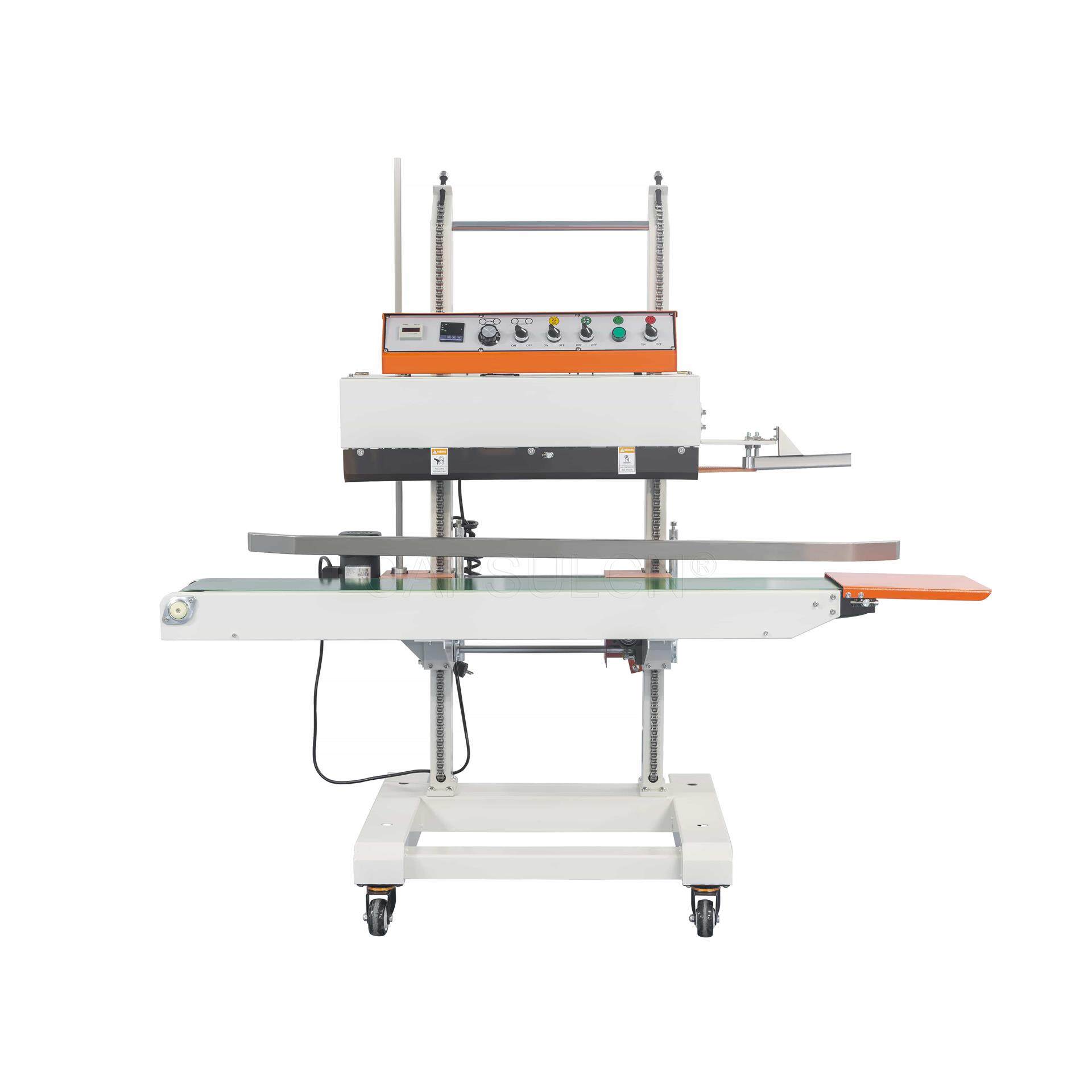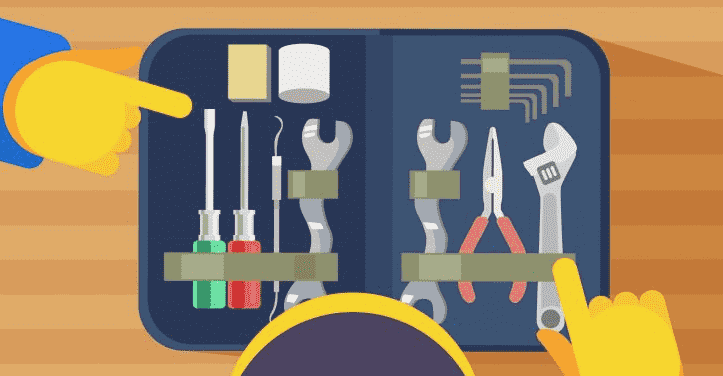How to Troubleshoot a Continuous Band Sealer: An Ultimate Guide
You're probably no stranger to the continuous band sealer, as it's one of the most common packing machines on pharmaceutical and food production lines. But like any other machine, it does suffer from occasional malfunctions. For a pharmaceutical production line, a sudden breakdown of the continuous bag sealer can have a serious impact on efficiency.


With that said, understanding common bag sealer problems and useful troubleshooting tips can help you better cope with such unexpected situations.
Keep reading to learn more!
How to Troubleshoot a Continuous Band Sealer in 5 Steps?

It doesn't matter what kind of bag sealer you use, whether it's a simple manual model or a complex automatic one. None of them are immune to sudden breakdowns. But don't worry! Take a look at the following 5 simple steps which will help you troubleshoot your continuous band sealer perfectly.
Step 1: Preparation

Before taking any steps to troubleshoot your continuous band sealer, turn off the power to the machine. This step is important to prevent users from being electrocuted during operation or even endangering personal safety. Next, read the machine's instruction manual carefully for important information about this sealer. In addition, please prepare tools that may be used during troubleshooting, such as screwdrivers and pliers.
Step 2: Identifying Possible Problems

Use the important information you have already gathered to analyze the possible causes of the machine malfunction. Here are some common continuous bag sealer problems for your reference.
- The sealing head is clogged, preventing normal sealing operation
- Poor bag sealing results
- Liquid or air leaks out of the bag opening
- The machine seals too hot, causing the bag to burn or melt
- Damage to the machine's heating element that prevents it from warming up
Step 3: Fixing Your Bag Sealer Failures

Below you will find the most common causes and solutions for continuous band sealer malfunctions.
|
Problems |
Causes |
Remedies |
|
The position of bag sealing mouth is deviated |
The active wheel of the machine is not parallel to the passive wheel |
Adjust the screw on the driven wheel |
|
The bag sealing is not flat |
The sealing band is creased |
Adjust or replace the sealing band |
|
The bag seal is stained |
The sealing band surface is not clean |
Remove adhesive and dirt from the sealing band |
|
The bag melts |
The sealing temperature of the machine is too high |
Reset the temperature of the heating element |
|
The coding machine can't print on the bags |
Run out of ink in the ink wheel |
Refill the ink wheel |
|
The printed code on the bag is blurred |
The heating tube in the ink wheel is not heated or the printing temperature is too low |
Check whether the heating switch in the ink wheel is turned on and make sure that the heating tube is not burned out |
|
Not enough vacuum in the bag |
Damaged vacuum pump or clogged vacuum lines |
Repair vacuum pump or remove clogs from vacuum lines |
|
Poor knurling effect |
The embossing roller is worn or the spring is not pressed |
Replace the embossing roller or adjust the spring |
|
The bag is not sealed securely |
1. The sealing temperature is too low 2. The speed of the sealing band is too fast 3. Excessive gap between heating blocks |
1. Reset temperature parameters 2. Slow down the speed of the sealing band 3. Set a proper gap between the heating blocks. The gap should be the thickness of one layer of packaging, which ensures sealing fastness and embossing clarity. |
Step 4: Testing the Bag Sealer

Now that you've taken action against the machine malfunction, the next step is to test run your bag sealer to see if the problem has been resolved. While test running the bag sealer, observe it carefully. If it runs normally without any abnormalities, then congratulations you have successfully troubleshot the problem!
If the machine sounds an alarm, the problem may still be unresolved. At this point, you should contact the manufacturer or a technician for professional help.
Step 5: Keeping Records

After each successful troubleshooting of the bag sealer, please record the details in time. These records can be used as reference cases in the future. The next time a similar problem occurs in the machine, you will be able to solve it perfectly with your own experience. In addition, these records can also be used to train new bag sealer operators and help them become more skillful in operating the bag sealer.
Expert Tips for Maintaining Your Continuous Bag Sealer
If you want to keep your continuous bag sealer in top working order and avoid breakdowns as much as possible, it's vital to know a few things about the routine maintenance of your machine. Below we will share with you some expert advice in this area.

Daily Maintenance Tasks for Bag Sealer
- After the user has finished using the bag sealer each day, wipe the surface of the machine with a soft cloth to avoid dust buildup.
- Check the exterior of the bag sealer for visible damage and cracks.
- Check the sealing jaw of the band sealer for wear and tear and wipe it with a soft cloth and neutral detergent.
- Check that the bag sealer’s power switch is working properly.
- Test run the bag sealer to make sure its sealing function is normal.
Weekly Maintenance Tasks for Bag Sealer
- Clean the sealing jaw of the bag sealer thoroughly once a week. If you find it badly damaged, replace it with a new one.
- Clean all moving parts of the bag sealer once a week, especially the conveyor belt.
- Lubricate the bag sealer's moving parts weekly.
- Check and calibrate the temperature and pressure gauges of the bag sealing machine.
Monthly Maintenance Tasks for Bag Sealer
- Once a month, perform a thorough inspection of the bag sealer's all components. If you find any parts damaged or malfunctioning, replace them.
- Check the bag sealer for loose screws. If the screws are loose, tighten them.
- Thoroughly clean the bag sealer once a month to make sure there is no dust accumulation inside the machine.
- Keep a record of sealer maintenance tasks completed during the month for future tracking and reference.
The Bottom Line
Anyway, we hope these continuous bag sealer troubleshooting and maintenance tips will help you use your machine more safely and efficiently.
For more useful information about bag sealers, please contact ipharmachine. We have experts available 24/7 to help you.
Leave your comment
Also Offers


Containment Automatic Capsule Filling Machine SFK-703

Fully Automatic Dosator Capsule Filling Machine CZ-40

Our Team
As an expert in the pharmaceutical and pharmaceutical packaging industry, iPharMachine has provided solutions for hundreds of pharmaceutical and health product manufacturers for 17 years. By visiting customers, we get good reviews from our customers.
- info@ipharmachine.com
- English Español Deutsche








